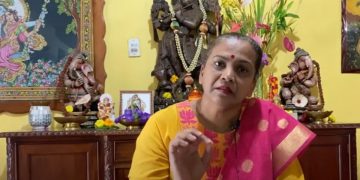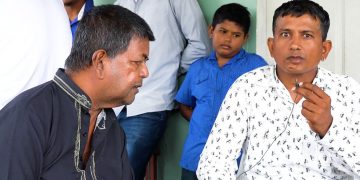At Makhan Street in Felicity the villagers came together to celebrate the 109th anniversary of Ramleela. This is no small feat! It is the best example of cultural persistence which Morton Klass, an anthropologist from North America, concluded in his book East Indians in Trinidad: A Study in Cultural Persistence, after spending an entire year in field research in Felicity in 1958.
Morton Klass concluded that Amity (fictitious name of Felicity) was in structure an Indian village and not a West Indian community. Dr. Eric Williams, a scholar and then premier of Trinidad and Tobago, strongly objected to the conclusion of Klass.
Ivar Oxaal, in his book titled Black Intellectuals Come to Power – The Rise of Creole Nationalism in Trinidad and Tobago quoted from Dr Eric Williams’ independence Histories where the latter scolded Morton Klass. Dr. Willams retorted: “A foreign student, with all the impetuosity of youth rushing in where angels fear to tread, may talk glibly of an Indian village in Trinidad not being West Indian, and predict that the Indians will never be assimilated.”
Ivar Oxaal continued: “No one can deny, after spending a few hours, leave aside a full year, in Felicity or one of the other East Indian, rural, village ghettos in the heart of the sugar belt, that these people are different from the island’s Negroes, and even from the Indians one has met in town.”
109 years of Ramleela! This is phenomenal. When I saw the Ramleela in progress not only in Felicity but throughout the country, it can be concluded that it is the most befitting response to Dr. Eric Williams’ pessimism.
While Indian culture continues to flourish, there is without a doubt a high degree of acculturation to European, American and Creole values thus challenging the Indian mindset. Fortunately, the Indians have responded with persistence which Klass concluded in his research – East Indians in Trinidad-A Study of Cultural Persistence.
Cultural diversity is a feature of Indian society, Travelers have noted that the dialect, dress, cuisine and other cultural traits change every fifteen kilometers in India, a rare and unique feature compared to other parts of the world. Today several East Asian countries including Thailand, Malaysia and Indonesia celebrate Ramleela which have become integrated into their cultural environment.
The Ramleela is so much part of the cultural heritage of Trinidad and Tobago that it did not miss the eyes of Nobel Laurette Derek Walcott who in his acceptance speech for the Nobel Prize in 1992 made reference to Ramleela.
Ramleela is the story of Rama’s struggles to overcome the forces of darkness; it is not mythology but a social challenge that Hindus encounter daily. Ramleela has inspired us to do our duty and the people of Makhan Street in Felicity have done just that – continue the tradition that their ancestors have planted upon this land.






































































